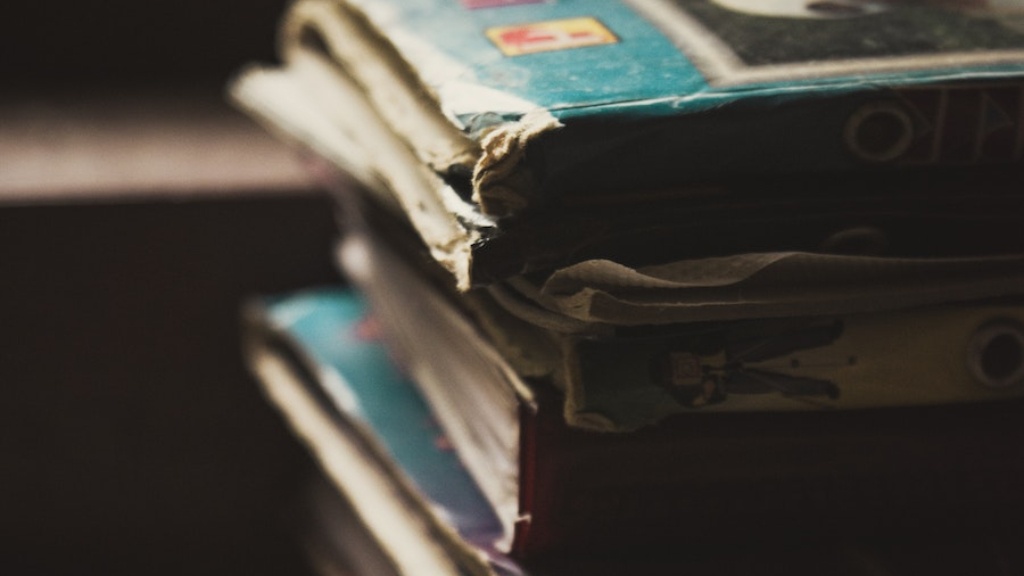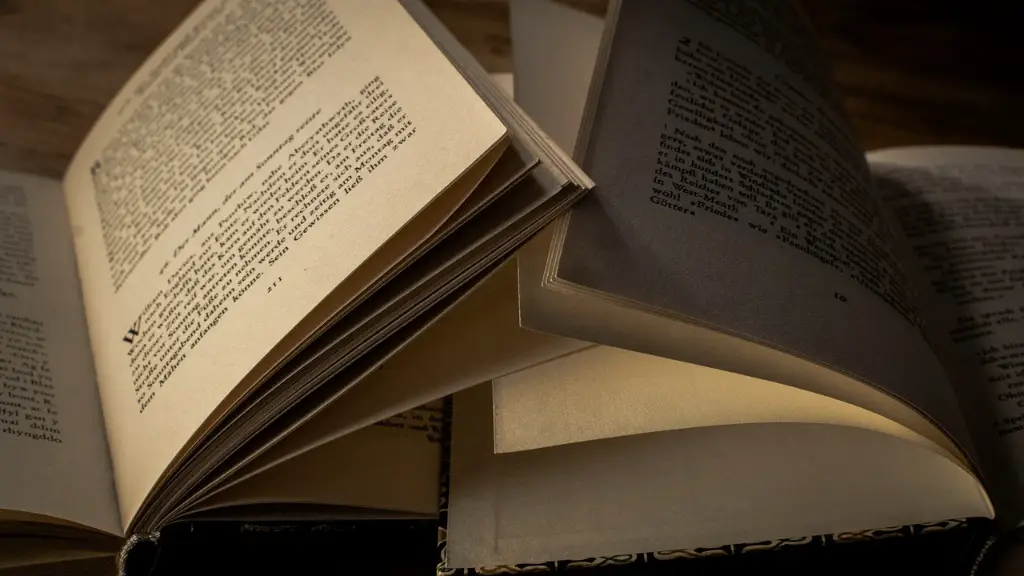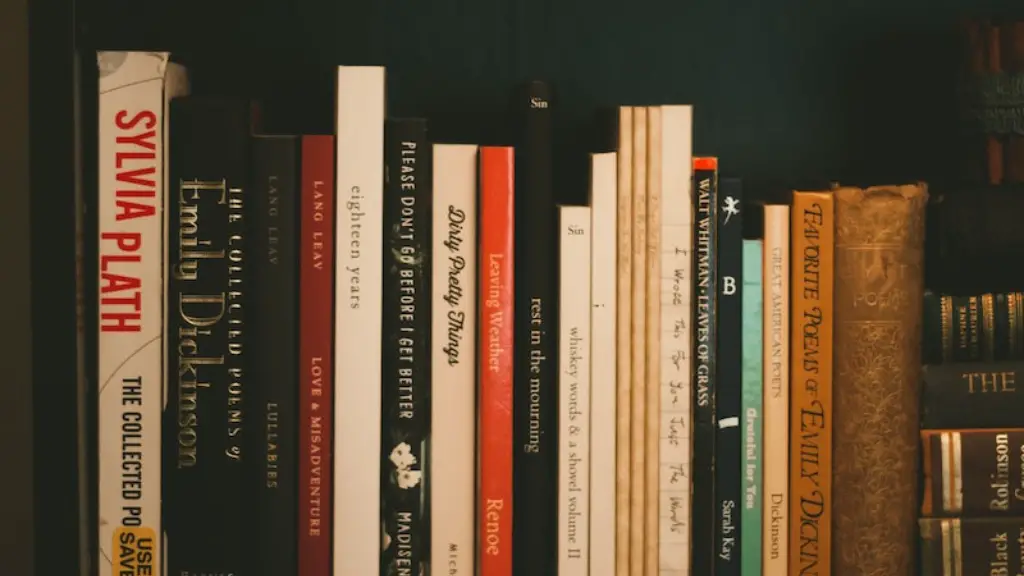People’s Interest in Poetry
In the age of the internet, it can be harder to find the time and space to read, let alone the motivation to read something more complex than basic articles. With endless news apps and updates on new tech, the digital era constantly provides us with new information and stimulation, leaving no room for literature enthusiasts. Especially in the current generation of youths, creativity and culture has taken a backseat as rather than reading in their free time, many divert their attention to more artificial forms of enjoyment such as movies, television and gaming. But, there are still people that are passionate and invested in works of culture, and these are the people that keep poetry alive.
Studying the viewing trends on and engagement with poetic works reveals a steady pattern of interest. Research conducted by the Rutgers Journal of Poetry and Poetics has showed a steady increase in the amount of people engaging with poetry works, whether in academia or in the literary scene in general, with Libraries carrying different poetic publications and holding events to discuss and celebrate them.
Rather than seeing poems as monotonous and tedious, readers of the new generation are opening up and accepting the classic works of renowned names such as Shakespeare, Wordsworth and Tennyson, to name just a few. This has proven to be a more comfortable approach for younger crowds, who are often intimidated by the classic ‘long’ forms of prose.
The Beats and the Counterculture Movement
Rising in the 1950’s and 60’s, the Beatnik movement was one of the major influences in re-cultivating and popularising the idea to read poetry, and the idea to write poetry in short and free-flowing styles. The beat poets, Allen Ginsberg and Jack Kerouac, who were part of the famous Beat Generation, challenged the norm by creating poetic works outside of the regular, structured poems. Their attempts at recreating poetry with symbols, slogans and images made poetry more interactive and accessible, drawing in global attention and a larger audience.
Furthermore, in the 1950’s the surge of the Counterculture era made for an interesting mix of topics for poetry, bringing to light counterculture and liberated topics into the fold of poetic works. This introduced a different type of energy to the poetic genre and made readers associate poetry with the more radical themes and ideas, making it more appealing and worth engaging with.
Spread of Poetry in the Digital Age
Since the earlier days of the Beat Generation, poetry has had a permanent spot in the contemporary establishment. This includes poetry slams and spoken word battles, which have gained traction in larger communities in recent years. The internet has made it seemingly easier to spread these type of activities. Social media platforms such as Twitter have been used to share and spread newly written works of poetry with a larger audience. Youtube is also a simplistic example of sharing and generating new works of poetry.
This approach of writing and reading with a limited character limit aids the modern reader in terms of time and understanding, and overall engagement. With the development of search engines, readers are able to find works of poetry that are not collective works such as books or anthologies, but rather pieces that have been written by individual writers. Search engines add a sense of personalisation to the poetic works that are readily available online, and make the whole exploration process much easier and more efficient for readers.
The Impact of Educators and Poets
The passion for poetry has been maintained over the years through the lessons by educators, whose objectives are to keep the arts and culture aspect of education as a main priority. Educators have continued to train minds to think in a profound manner, to be open to the intellectual values of poetic works, and continue to spread the love for literature. Educators are actively creating the opportunity to explore new topics and themes through their curricular activities, and have done a remarkable job at teaching students the value of literature and the words behind each poetic work.
Aside from educators, the poets of the modern era have opened a channel for expression with which the public can relate and find solace in. Poets such as Rupi Kaur, Warsan Shire and Lang Leav have become internationally recognised figures, and their works have made a cornerstone in the impact of new poetry. All three writers are pioneers in the way of free-flowing, short everyday inspirations expressed through poems, which has gained a global audience. With their influence, literacy-minded people continuously challenge the idea of reading poetry in larger contexts, the lesson being that reading is an act of understanding and a gateway to learning.
Community Involvement
Community involvement within the poetry scene is truly remarkable, especially in urban cities. Writing workshops, writing competitions and poetry slams are all examples of how literature has become a platform for community engagement and discourse. Through these events, readers and writers alike are able to come together and share their works openly and without judgement.
There has been talk about the potential benefits of poetry-based therapy, which brings together a group of individuals to discuss, accept and negotiate their emotions through their works. The healing and peaceful process of narrating and articulating words through individualised and collective writing has been beneficial to many, whether they identify as writers or readers.
An Interactive Scenario
With technology comes the multisensorial, or interactive way of engaging with works of literature. Movies based off of books and plays, as well as audiobooks have taken readers to a new level of engagement. Alike to the previously discussed beats and counterculture movement, this is seen as a more comfortable approach for readers of all generations.
Nowadays, you don’t need to be at a dedicated reading event to enjoy the works of renowned poets, as the visual aspect of the dialogue and the texts can be found online. Through mobile apps, communities are able to find, listen and discover different works of literature in all its forms, catering to all sorts of audiences, bringing poetry closer to all readers. All these new, engaging forms add to the idea that reading is an activity that, if done in the right manner, can be very alluring.
The Future of Poetry
Overall, poetry has been in the centre of discourse for hundreds of years across the globe, and this has continued to be the case. The digital age introduced new and creative ways of engaging with poetry and its related works, as well as ways of constructive and interactive discourse. People’s interest in poetry over the past few years has seemed quite consistently present, leaving readers in a state of mindful and enjoyable response. With the involvement of educators, poets and the community, poetry will continue to live on for many generations to come.
Expanded Remarks on Poetry
The study of poetry can be broken down into three main parts; history, context and analysis. History is an understanding of when and why the poem was created. Context is the external setting and influences that can be seen throughout the text. And analysis is the process of breaking apart the text to find the messages and meanings that have been embedded.
By studying the history, context and analysis of a single poem, readers can gain a better understanding of society and literature. This is done by delving into the details and metaphors of the poem, seeking out the cultural connections as well as grammar. Through this process, readers can learn to appreciate the work of a poet and can also gain a better understanding of their culture, ideals and point of view.
Likewise, there are a wide-variety of poetic devices and forms to explore. Poetic devices such as metaphor, alliteration, assonance and simile add to an understanding of how poetic devices can be used. For example, by using the poetic device of repetition, a poet can give an impression of significance and emphasise a particular idea. Furthermore, forms such as ‘the Villanelle’, ‘the Limerick’ or ‘the Sestina’ are also great methods of expressing oneself poetically.
Relevance of Poetry to Society
The study of poetry is relevant to today’s society, as it can provide insight into the societal issues of the time, as well as the philosophical views of the poets and the works they have created. Poets use their work to voice their opinions on their personal, political and cultural views, and these can serve as a catalyst for social and political change. Through the understanding of a poem’s content, readers can learn about the societal issues of the era, and gain a better understanding of the complexity and nuances of different cultures.
Lyrical works of poetry are also relevant to today’s society, as they can be used to explore issues of song and political culture, as well as to discuss the influence of popular media on different generations. Poetry can be used to celebrate the successes of society, as well as to document the struggles and hardships experienced by different cultures. Through the examination of poetry, readers can gain a better understanding of how different cultures, societies, and generations communicate and interact with each other.
Conclusion of the Matter
All in all, poetry is something that can be appreciated by all, regardless of age, culture or gender. In this age of digital technology, readers have access to a wide variety of poetic works, making it easier to find and explore the works of literature that they enjoy. While the new generation of readers may be intimidated by the long-form classical pieces, there are many new, innovative ways that have started to make reading poetry approachable, such as e-books, audiobooks and social media poetry readings which have attracted greater readership.
At the end of the day, poetry has remained a passion for many readers, proving that when it is made accessible, people will engage and appreciate it. With the presence of educators, poets and community gatherings, it is evident that people still engage with poetry and will continue to do so for years to come.


